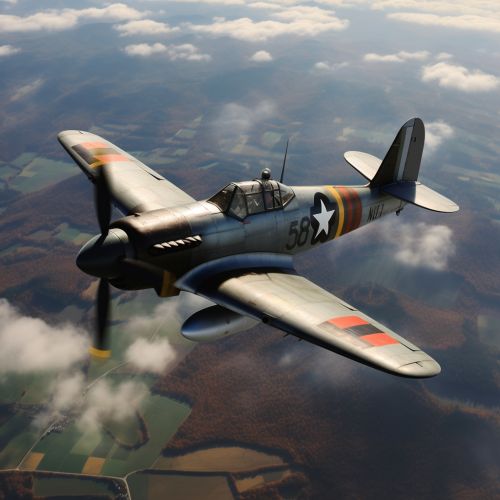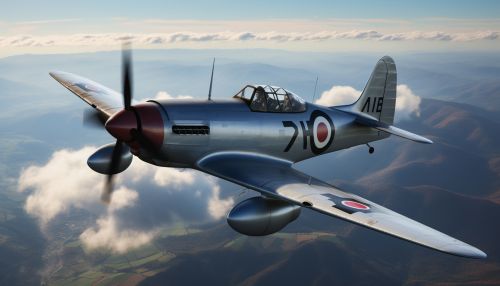Focke-Wulf Fw 190
Development and Design
The Focke-Wulf Fw 190 is a German single-seat, single-engine fighter aircraft designed by Kurt Tank in the late 1930s and widely used during World War II. Produced from 1941 until 1945, it was used by the Luftwaffe and other Axis air forces. The Fw 190 is considered Germany's best fighter aircraft of World War II. It made a significant impact when it first appeared on the Western Front in August 1941.


The Fw 190 was well-liked by its pilots. Some of the Luftwaffe's most successful fighter aces claimed a great many of their kills while flying it, including Otto Kittel, Walter Nowotny and Erich Rudorffer. The Fw 190 provided greater firepower than the Bf 109, and, at low to medium altitude, superior maneuverability, in the opinion of German pilots who flew both fighters.
Operational History
The Fw 190 was used extensively in many roles, including day fighter, fighter-bomber, ground-attack aircraft and, to a lesser degree, night fighter. When it was first introduced in combat in August 1941, it quickly proved to be superior in all but turn radius to the Royal Air Force's main front-line fighter, the Spitfire Mk. V. The 190 wrested air superiority away from the RAF until the introduction of the vastly improved Spitfire Mk. IX in July 1942 restored qualitative parity.
Variants
There were many variants of the Fw 190, including the Fw 190A, Fw 190B, Fw 190C, Fw 190D (nicknamed the Dora), Fw 190E, Fw 190F (a ground-attack variant), and the Fw 190G (a long-range fighter-bomber). The most widely produced and strategically important versions were the Fw 190A, late-model Fw 190D and Fw 190F.
Technical Specifications
The Fw 190 had a maximum speed of 656 km/h (408 mph) at an altitude of 20,000 ft (6,100 m). The aircraft was powered by a BMW 801 D-2 radial engine. The Fw 190's wide landing gear, designed to handle the higher wing loading of the Fw 190, gave it excellent ground handling characteristics.
Legacy
The Fw 190's legacy is evident in many modern fighter aircraft designs. Its wide-track undercarriage became a standard feature in post-war aircraft, as did the concept of fitting heavy armament in the wings, rather than the fuselage. The Fw 190's combination of high speed, heavy armament, and excellent pilot visibility made it a formidable opponent in air combat.
